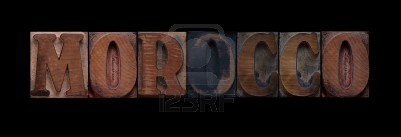Moroccan Wood
The Wood
The art of wood in all its forms, has always, been able to give life and luster to the wood. Openwork, carving, turning and paintings of all kinds penetrate its innermost recesses and we reveal its secrets.
The carved wood: In architecture as in interior furnishings, and leasehold inspired motifs (palms, palmettos, interlacing leasehold) and geometric (straight interlacing, chevrons, stars) are based in the timber and blend, extend and tradition move us deeply.
Painted wood: The zouaq (painting) decorates the wood, it adds character and remains one of the most assertive traits craft of architecture in Morocco. And, if the paint is the easiest way to decorate wood, it emphasizes the sculpture, the halo of lights indicating an ancestral knowledge of colors and tones.
The inlaid wood Essaouira: Masters made in the art of marquetry craftsmen Essaouira gently play with cedar and consist of subtle works like musical notes.
The violin: The art of violin echoes a certain virtuosity, the luthiers who tactfully give the wood the magic of sound. Around a range of tones to the extreme subtlety, they create the lute "Oud" mandolin "rebab" the fûte "nira" zither "kanun" tambourine "t'bal." An ode to the Arab-Andalusian music and folk songs.
The Cedar Tree: The Thuja (pronounced twiya) is a tree of the coniferous family, close to cedar, which grows only in Morocco, specifically in the Atlas Mountains (Essaouira, Azemour, Idaoutanane ...). It is an evergreen tree type and thick branches characterized by a unique arrangement of branches. The cedar, rare, aromatic and dense, is unique among all other types of exotic wood.
Quality Thuya wood
Special and luxurious cedar, hardwood is a recognizable by its dark red speckled groups of small dark brown spot and sometimes patterns veins golden color. The qualifications for this wood are its hardness, rarity, hundreds of textures that presents its luxurious appearance, beautiful polish that occurs after polishing, and finally the great aphrodisiac almost smell the exotic wood releases
Availability of wood of Thuja
This rare wood is not found elsewhere except in MOROCCO. This is why operations is controlled and its export in raw or cut to size, is strictly prohibited. The use of this wood became strictly regulated by the government which made the accelerator to the wood very difficult.
The art of wood in all its forms, has always, been able to give life and luster to the wood. Openwork, carving, turning and paintings of all kinds penetrate its innermost recesses and we reveal its secrets.
The carved wood: In architecture as in interior furnishings, and leasehold inspired motifs (palms, palmettos, interlacing leasehold) and geometric (straight interlacing, chevrons, stars) are based in the timber and blend, extend and tradition move us deeply.
Painted wood: The zouaq (painting) decorates the wood, it adds character and remains one of the most assertive traits craft of architecture in Morocco. And, if the paint is the easiest way to decorate wood, it emphasizes the sculpture, the halo of lights indicating an ancestral knowledge of colors and tones.
The inlaid wood Essaouira: Masters made in the art of marquetry craftsmen Essaouira gently play with cedar and consist of subtle works like musical notes.
The violin: The art of violin echoes a certain virtuosity, the luthiers who tactfully give the wood the magic of sound. Around a range of tones to the extreme subtlety, they create the lute "Oud" mandolin "rebab" the fûte "nira" zither "kanun" tambourine "t'bal." An ode to the Arab-Andalusian music and folk songs.
The Cedar Tree: The Thuja (pronounced twiya) is a tree of the coniferous family, close to cedar, which grows only in Morocco, specifically in the Atlas Mountains (Essaouira, Azemour, Idaoutanane ...). It is an evergreen tree type and thick branches characterized by a unique arrangement of branches. The cedar, rare, aromatic and dense, is unique among all other types of exotic wood.
Quality Thuya wood
Special and luxurious cedar, hardwood is a recognizable by its dark red speckled groups of small dark brown spot and sometimes patterns veins golden color. The qualifications for this wood are its hardness, rarity, hundreds of textures that presents its luxurious appearance, beautiful polish that occurs after polishing, and finally the great aphrodisiac almost smell the exotic wood releases
Availability of wood of Thuja
This rare wood is not found elsewhere except in MOROCCO. This is why operations is controlled and its export in raw or cut to size, is strictly prohibited. The use of this wood became strictly regulated by the government which made the accelerator to the wood very difficult.







Comments
Post a Comment